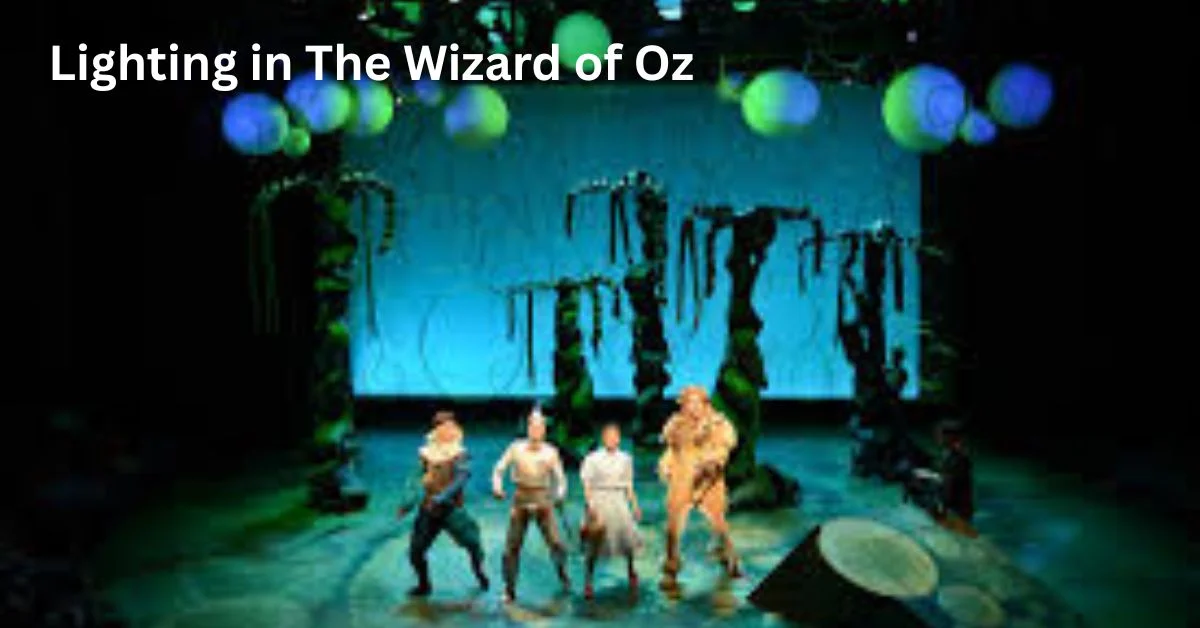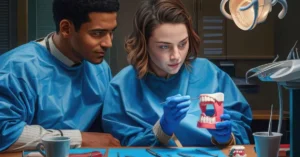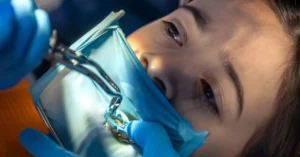Few films in the history of cinema are as instantly recognizable—and deeply symbolic—as The Wizard of Oz. Released in 1939, the film is celebrated not just for its characters or timeless music, but for its groundbreaking use of color, light, and shadow. While much has been written about its transition from sepia to Technicolor, the lighting in The Wizard of Oz deserves more attention as a transformative element that guides emotion, reinforces theme, and advances the narrative in profound ways.
For those interested in how lighting shapes meaning in film, The Wizard of Oz is a living textbook. Every shadow and spotlight tells a story beyond the script, working hand in hand with costume, color, and camera movement. This article provides a comprehensive, updated understanding of how lighting was used in the film—not only as a technical necessity of early color filmmaking but as a psychological and symbolic force.
Understanding the Role of Lighting in Classic Cinema
To fully appreciate the lighting in The Wizard of Oz, it’s important to understand the context of filmmaking in the late 1930s. Lighting then was not just a creative choice—it was often a requirement for exposing film stock properly, especially in the early days of Technicolor, which demanded high-intensity lighting to capture color accurately.
Yet despite these technical limitations, or perhaps because of them, cinematographers and directors developed complex lighting strategies that also served storytelling. The Wizard of Oz, directed by Victor Fleming and shot in part by cinematographer Harold Rosson, stands as a milestone where artistry and technology met in a finely balanced dance of light and shadow.
The Famous Transition: From Sepia to Technicolor
The most famous use of lighting in the film is tied to its color transition. When Dorothy opens the door of her Kansas farmhouse and steps into Oz, the shift from sepia tones to brilliant color is one of the most iconic visual moments in film history.
But this wasn’t merely a technical effect—it was a lighting masterpiece. The sepia scenes were shot in black and white and then tinted, while the colorful Oz scenes required new lighting setups with enormous arc lamps to properly expose the Technicolor film. These lights ran so hot that actors and crew reportedly fainted on set.
In narrative terms, the lighting helped reinforce the emotional message: Kansas is flat, subdued, and shadowed—Oz is bright, alive, and saturated with color. Light becomes metaphor: Dorothy’s journey is not just from place to place, but from dullness to wonder.
Lighting as a Storytelling Tool
While the color shift gets most of the attention, the lighting throughout the film continues to be nuanced and symbolic. Each major setting in the story features its own lighting logic, enhancing mood and theme.
1. Kansas – Harsh Shadows and Flat Light
Kansas is shown in sepia, but also in flat lighting with naturalistic shadows. It feels barren and washed out. The shadows are long, often cast from a single overhead source, giving the impression of an unforgiving sun and a dusty, tired world.
The lighting here is designed to strip the image of glamor. There’s a moral plainness to it—life is hard, simple, and unembellished.
2. Munchkinland – Soft Light and High Key Illumination
When Dorothy arrives in Munchkinland, the lighting changes dramatically. Now in Technicolor, the light is high key, evenly distributed with minimal shadows. This creates an idyllic, innocent effect that mirrors the childlike joy of the munchkins and the surreal nature of Oz.
This kind of lighting also emphasizes color vibrancy. The soft shadows and bright scenes allow viewers to absorb the visual spectacle of flowers, costumes, and painted backdrops.
3. The Yellow Brick Road – Directional Light and Color Contrast
As Dorothy begins her journey, the lighting becomes more directional and contrastive. Highlights fall strongly on the yellow bricks and vibrant costumes, emphasizing forward motion and energy.
Here, lighting reinforces the literal and metaphorical journey: it’s directional, purposeful, and bathed in warm hues. As characters join her—Scarecrow, Tin Man, Cowardly Lion—the lighting often adapts to highlight the contrast between them and their environment.
4. The Wicked Witch’s Castle – Chiaroscuro and Expressionist Influence
Lighting reaches its most dramatic extremes in the witch’s castle. Here we see heavy shadows, stark contrasts, and angular lighting that borrows from German Expressionist film traditions. Think The Cabinet of Dr. Caligari—a reference that may not have been overt but certainly resonates.
The dark stone walls, torchlight, and looming shadows create a space of fear and power. The witch’s face is often lit from below, exaggerating her features in a classic villainous style. This isn’t subtle—it’s theatrical and deliberate, making her domain feel otherworldly and dangerous.

Lighting and Character Development
Dorothy: Lighting in The Wizard of Oz
Throughout the film, Dorothy is consistently lit with soft key lights that provide a natural glow. She is almost never in deep shadow, reinforcing her role as the moral and emotional anchor. When she is lost or confused, the light dims slightly, but never becomes harsh.
The Wizard: Lighting in The Wizard of Oz
The Wizard’s first appearances involve a massive visual illusion—smoke, projection, and thunder. The lighting here does two things: it contributes to the mythic grandeur of the Wizard, and then, when he is revealed to be just a man behind a curtain, it shifts dramatically to mundane, even comedic lighting.
That shift reinforces the theme of illusion versus truth. Lighting here plays a key narrative role, not just a visual one.
Glinda and the Wicked Witch
The contrast between Glinda and the Wicked Witch is also managed through lighting. Glinda is often backlit or surrounded by light—literally glowing. Her soft lighting emphasizes beauty, goodness, and celestial power.
The Wicked Witch, by contrast, is lit harshly and from below or the side, casting angular shadows and enhancing her green skin tone to unnatural effect. The lighting visualizes morality: good is bathed in light, evil is cloaked in darkness.
Lighting Equipment and Innovations on Set
Shooting The Wizard of Oz required overcoming numerous technical challenges, especially related to lighting. The early Technicolor process used a three-strip system, which made the camera bulky and required enormous amounts of light to expose properly.
This meant:
- Arc lamps were used extensively, producing both massive illumination and intense heat.
- Colored gels and diffusers helped modify light temperatures, crucial when rendering colors accurately.
- Specialized reflectors bounced light into hard-to-reach areas without shadows.
- Glass matte paintings were used in backgrounds, requiring precision lighting to avoid giving away the illusion.
These tools weren’t just behind the scenes—they shaped how the audience experienced the story. Shadows couldn’t just fall naturally; they had to be engineered to match mood and frame composition.
Symbolic Use of Light
The Wizard of Oz uses light not just to show but to imply.
- Rainbows become metaphors for longing and escape.
- Sunlight in Oz feels artificial but deliberate, like a stage.
- Darkness in the castle is not just scary, but represents entrapment, confusion, and manipulation.
- Spotlight moments (such as Dorothy’s solo scenes) highlight her emotional center and personal growth.
There’s a subtle interplay between theatrical lighting (almost like stage lighting) and naturalistic intent. This contradiction is key to the film’s enduring power: it is fantastical, but emotionally grounded.
Cultural and Cinematic Legacy
The lighting of The Wizard of Oz helped set new expectations for what was possible in cinema. It proved that light could not only create visibility—it could craft worlds, define morality, and shape narrative tone. Many filmmakers, from Steven Spielberg to Guillermo del Toro, have cited it as an early influence.
The film is now often studied in cinematography courses not just for its iconic moments, but for how lighting was used to solve practical challenges, serve story needs, and invent visual language that still feels fresh today.
Conclusion: Lighting in The Wizard of Oz
The lighting in The Wizard of Oz is not a technical footnote—it is a vital, intentional element that defines the emotional and thematic experience of the film. From the dull grays of Kansas to the saturated brights of Oz, from the eerie shadows of the witch’s lair to the soft glow around Glinda, lighting carries the audience through Dorothy’s internal and external journey.
Understanding the lighting decisions behind the film reveals a deeper layer of artistry—one where technology, symbolism, and emotion converge. It’s a masterclass in how cinematic light does more than illuminate—it guides, transforms, and enchants.
FAQs: Lighting in The Wizard of Oz
1. Why did The Wizard of Oz need so much lighting?
The early Technicolor process required very bright lights to expose film correctly. This also allowed more control over color tones and shadow, enhancing the film’s vivid look.
2. What lighting techniques were used in the witch’s scenes?
Low-angle lighting, hard shadows, and chiaroscuro techniques created a menacing atmosphere. These choices enhanced her villainous appearance.
3. Was the sepia-toned Kansas actually filmed in black and white?
Yes, Kansas scenes were shot in black and white and tinted sepia during post-production. It enhanced contrast with the Technicolor Oz scenes.
4. How did lighting help tell Dorothy’s story?
Dorothy was consistently lit in a soft, glowing way to emphasize her innocence and emotional clarity, even in moments of confusion or fear.
5. Why is lighting in The Wizard of Oz still studied today?
Because it demonstrates how lighting can serve narrative, mood, symbolism, and technical innovation all at once—a rare and enduring achievement in film history.
For more information, click here.









